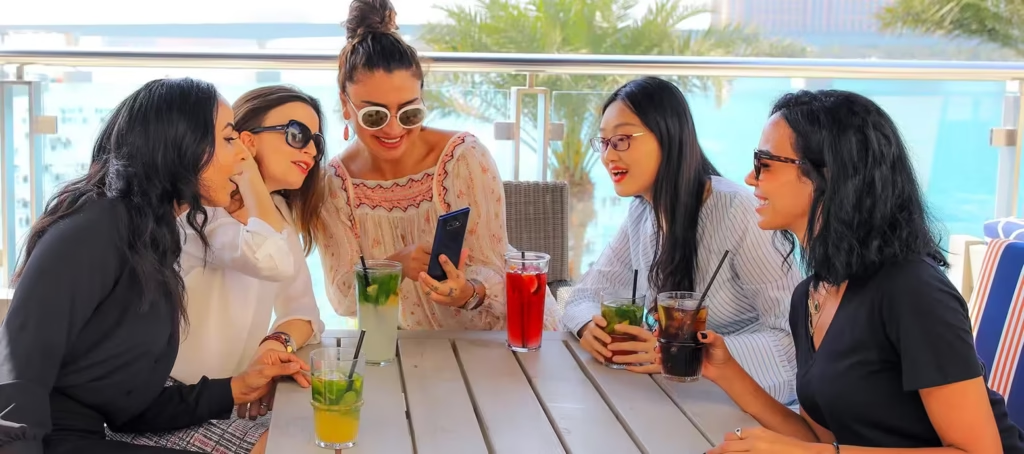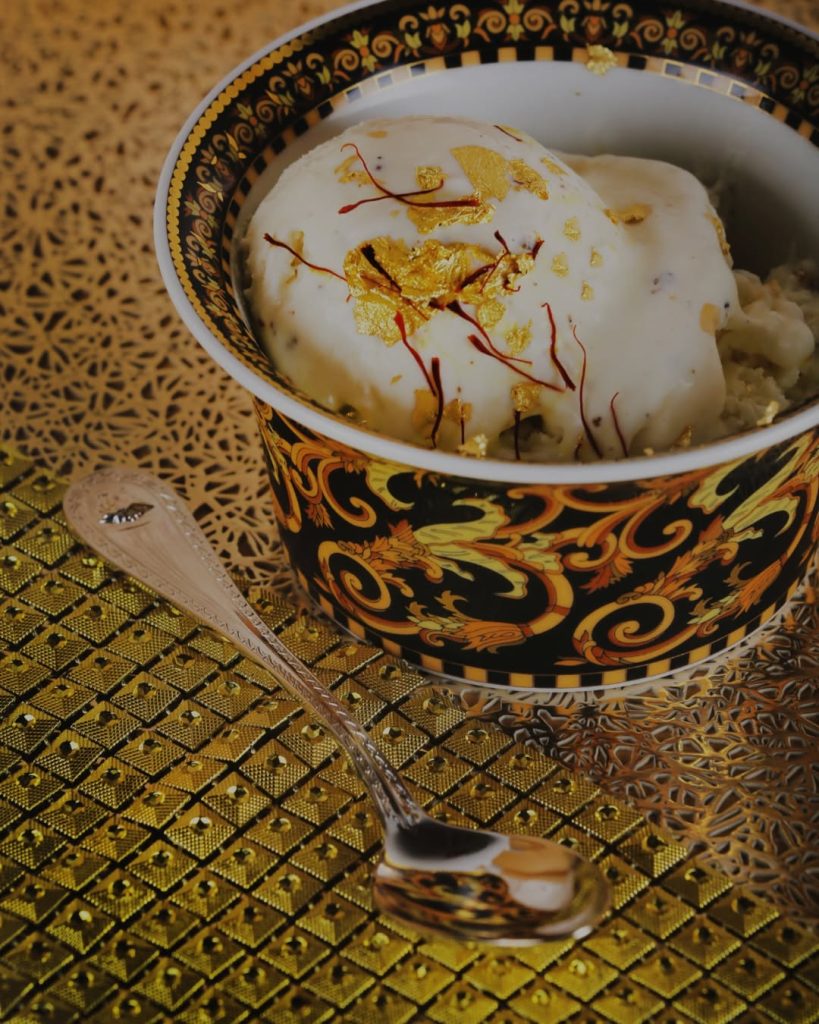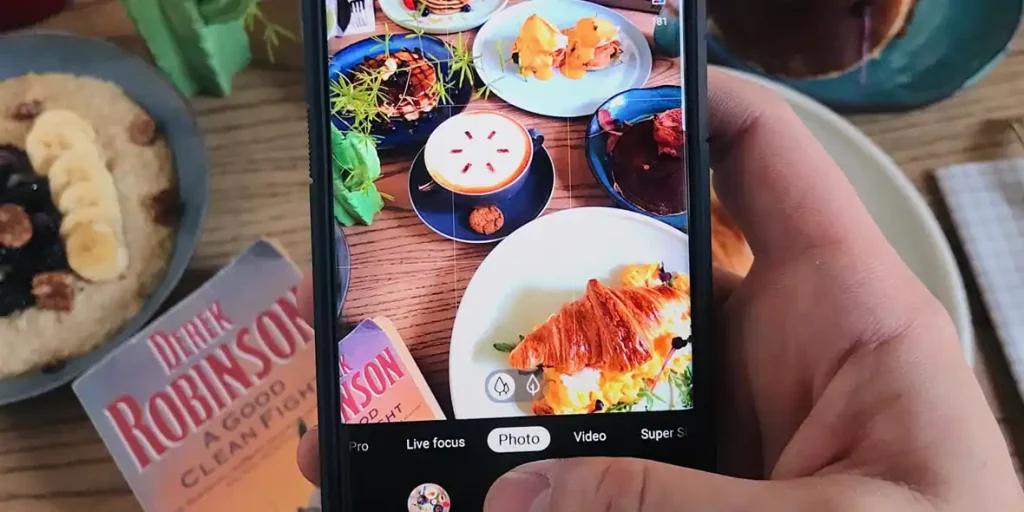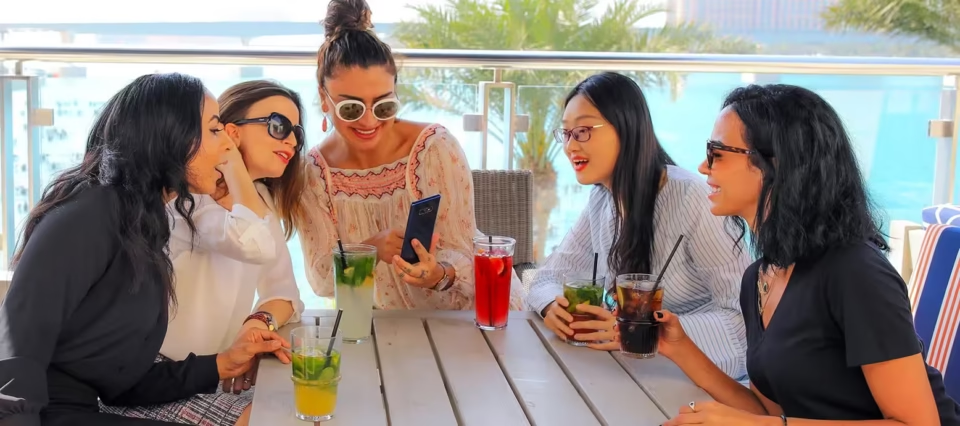In the Middle East and North Africa (MENA), social media has become a central ingredient in the region’s rapidly evolving dining scene. Where once food choices were driven by word-of-mouth or family traditions, they are now increasingly influenced by Instagram feeds, TikTok trends, and digital word-of-mouth from influencers.
With some of the world’s highest social media usage rates, the MENA region is at the forefront of this shift signalling the blending of tradition and technology to create a dining culture that is both digitally driven and deeply communal.

The digital dining revolution
In cities like Dubai, Riyadh and Cairo, people now scroll Instagram Stories or TikTok Reels instead of consulting traditional review sites or relying solely on word-of-mouth. Around 70% of diners in Dubai use social media to decide where to eat according to the Dubai Gastronomy Industry Report by the Dubai Department of Economy and Tourism (DET), and the city has become the 4th most popular food destination on social platforms globally, surpassing even Paris and Sydney.
The UAE has almost a 100% social media penetration meaning nearly every resident is online in some way which helps to drive the influence. Saudi Arabia also boasts significant engagement with 72% using Instagram and 70% on Snapchat. It’s a digital-first region, and food is one of its most shared passions with over 2.1 million Instagram posts and more than 127,000 TikTok videos highlighting Dubai’s culinary scene alone.
Scrolling for dinner, what’s the impact?
A visually appealing Instagram post or a viral TikTok can catapult a previously unknown eatery into the spotlight. Around seven in ten diners across MENA say they’ve chosen a restaurant after seeing it on social media. The immediacy and visual appeal of platforms like Instagram makes it easier than ever to influence consumer cravings.
Restaurants have noticed this shift. A recent survey found that 85% of hospitality businesses in the Middle East experienced a clear increase in footfall after being featured by an influencer. It’s no longer just about food quality or location, visibility on social platforms now plays a vital role in a restaurant’s success. Moreover, diners often perceive social media as more authentic and up-to-date than traditional food guides.
Influencers and micro-influencer appeal

Around 80% of the MENA population are following food bloggers or influencers and while high-profile influencers draw large audiences, micro-influencers with smaller, loyal followings are often just as impactful, especially in niche communities. They might focus on budget-friendly meals in Amman or vegan options in Dubai, and their followers trust their taste.
In addition to influencers, public figures and even royalty have an outsized effect. For example, Dubai’s Crown Prince Sheikh Hamdan, with millions of followers, is frequently seen dining out and sharing experiences. When he visits a new restaurant, it can spark a rush of interest. This form of “royal endorsement” carries cultural significance, combining public admiration with digital influence.
In Saudi Arabia, the influence continues through platforms like Snapchat, where informal, story-style content resonates strongly. Whether it’s a singer showcasing a late-night food run or a vlogger sharing a weekend family meal, the content is relatable, and influential.
‘Instagrammable’ eats, businesses respond
The rise of social media has shifted not only how people choose restaurants, but how restaurants design their menus and interiors. Across MENA, eateries now invest in “Instagrammable” features like neon signs, dramatic plating, and vibrant colour palettes. Diners aren’t just seeking flavour, they’re looking for a visual experience they can post.
Restaurants have responded by creating dishes designed for social media: gold-topped burgers, rainbow lattes, flaming shawarma, and dessert spectacles that melt or sparkle. One notable success was Scoopi Café’s 24-karat gold ice cream in Jumeirah, which went viral on TikTok and drew crowds eager to replicate what they saw online. These visual gimmicks become part of the dining story, generating content and word-of-mouth that money alone can’t buy.

This trend isn’t limited to high-end places. Street vendors and casual cafés are also embracing visual flair to entice younger, tech-savvy customers who are eager to share their meals with followers. A meal has become part performance, part photography, and all experience.
Apps powering the food scene
Beyond social media, there are other digital platforms In MENA that play a vital role in helping diners discover, book, and save on meals, including:
- Zomato remains a go-to app for browsing menus, reviews, and photos. It helps diners make informed decisions and stay up to date with new openings.
- OpenTable, which has expanded its presence in MENA, allows for instant reservations, particularly at mid-to-high-end venues. It often features curated restaurant lists and highlights popular or newly opened spots based on user activity.
- Restaurant Guru offers a directory of restaurants with curated reviews, photos, and ratings. It’s widely used across the region as a discovery tool, helping users sort by cuisine, price range, or popularity.
- Tripadvisor, Time Out, and local city guides remain influential, particularly for tourists or newcomers to a city.
The overall blend of tradition and technology

The MENA region has always embraced food as a social tradition. Meals are often shared affairs, built around family, generosity, and community. What’s changed is the scale and speed of how those moments are shared. Social media now acts as the modern-day majlis, a gathering space where stories, photos, and food recommendations are exchanged, only now it’s global and open 24/7.
Social media is nudging diners out of their comfort zones. Constant exposure to global cuisines and local hidden gems has encouraged a more adventurous culinary culture, where people are more willing to try new places they have seen online.
Yet, at its core, dining in MENA still revolves around shared experiences and good company. What’s changed is how those experiences are broadcast and multiplied. A meal in Beirut, Doha or Muscat might now inspire thousands to try the same dish, not through advertising, but through a compelling story shared by someone they trust online.



